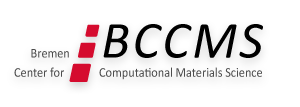Description
The technology base of modern information society is made of micro- and optoelectronic devices. The primary electronic materials are semiconductors, but this concept has widened in the past two decades from the traditional small-gap covalent materials now to include wide-gap diamond and transition metal oxides on the one hand, and perturbed semimetals like graphene nanoribbons or topological insulators on the other. At the same time, improvement of materials technology, and especially the appearance of nanostructuring opened up new applications for electronic materials in spintronics and magnetometry, in photocatalysis, and in medicine. The one thing which has not changed is the fact that the functionality of electronic materials are either defined or at least strongly influenced by the presence of defects and surfaces. Understanding the effect of these in various application became an important prerquisit of technology design (including synthesis), but also a major challenge for both experimental and theoretical solid state physics. As methodology of these have improved, new possibilities have opened for applications, too.
This short workshop attempts to give a cross-sectional snapshot of the developments both in methodology and in practical results from theory and experiment. It also gives an opportunity to reinforce scientific cooperation between groups working with the elements of Group-4a/b and their oxides.
